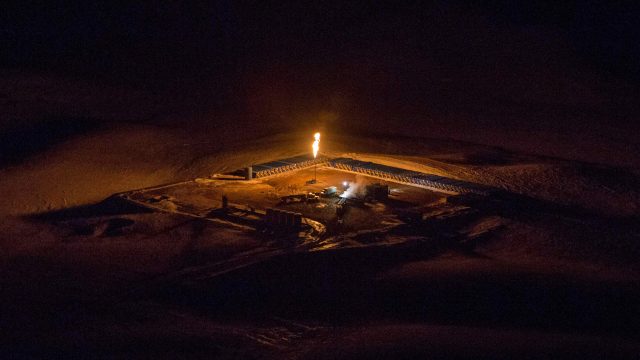North Dakota Flaring Decreases For Third Straight Month

Lynn Helms, the Director of North Dakota’s Department of Mineral Resources, said he was disappointed that the re-started Hess gas plant in Tioga didn’t have more of an impact on flaring in the state. That’s the statement that’s been seized on for headlines about yesterday’s state oil/gas report, but the bigger news is that the state is making steady progress on flaring since a peak over the winter when the Hess plant was shut down for expansion.
Flaring rates spiked during that time, but are now on a download slope declining for three consecutive months:

The flaring issue – which really is a problem in North Dakota – is often presented in a rather gloomy context by the media, but the state has made significant progress in reducing the percentage of gas flared over the last few years. Through 2013 the percentage of gas flared had decreased for three straight years, but in 2014 we’re up again (so far).

I think we’ll see a continued downward trend this year in flaring, thanks in part to the Hess plant operating at full capacity again and the new flaring regulations put in place by the State Industrial Commission (their goal is to have 90 percent of gas captured by 2016). I wouldn’t be at all surprised if 2014, by the end, had an overall flaring percentage lower than 2013’s.
And I wish we could separate the flaring figures for state-regulated lands from flaring on federal lands, particularly the Fort Berthold Indian Reservation. The flaring rate there is nearly 50 percent, mostly due to the difficulty in building gas capture infrastructure created by red tape from three separate federal agencies (the Bureau of Indian Affairs, the Department of the Interior and the US Fish & Wildlife Service).
I’m not sure it’s fair to hold state officials accountable for flaring they really have little control over.




